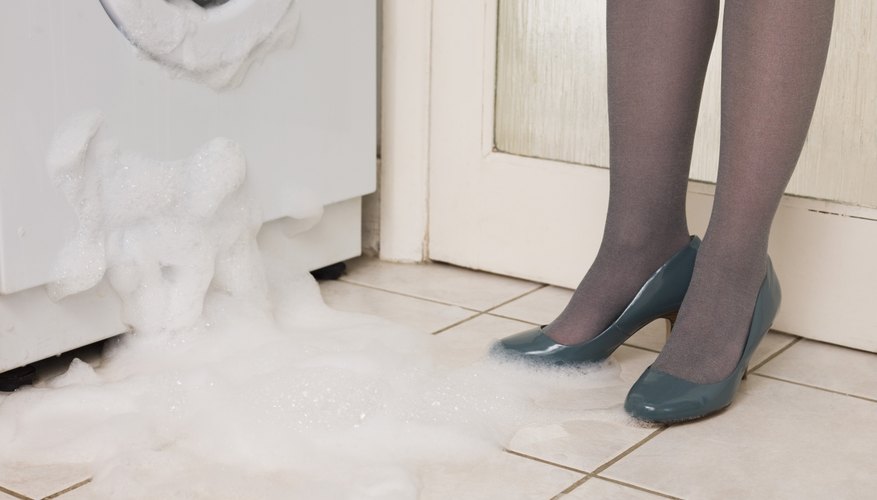An inexpensive, adaptable and easily-worked material, medium-density fibreboard (MDF) is commonly found in many UK homes. However, as more areas of the UK experience floods, water damage to MDF baseboards becomes a more significant issue. MDF baseboard in kitchens can also be damaged if a faulty washing machine or dishwasher expels water onto the floor rather than through its outlet hose.
The problem
MDF, a manufactured board of wood fibres and glue, does not repel water well. According to Switzerland’s École Polytechnique Fédérale de Lausanne, this is because MDF does not have grain and has markedly different mechanical properties from “real” wood. If MDF comes into contact with even a little water, it will tend to swell and this distortion is often impossible to repair effectively.
Removal
Baseboard is usually fixed in place by nails or screws. If it is fixed with screws, you will probably see plastic cover caps along the baseboard row. Pop off the caps with the tip of a screwdriver, remove the screws and take away the baseboard. If you cannot see any plastic cover caps, your baseboard is probably nailed in place. Use a crowbar to gain purchase on the top lip of the wood, then pull the crowbar forward to rive the wood free.
- Baseboard is usually fixed in place by nails or screws.
- If it is fixed with screws, you will probably see plastic cover caps along the baseboard row.
Repair
Repairing water damaged MDF is likely to result in a job less satisfactory than replacing it. However, there may be good reasons why you prefer this approach. In this case, squirt PVA glue into any gaps in the MDF opened up by the water and allow it to sink in for a few minutes. Use G clamps along the board to squeeze it back into shape. Wipe away any excess glue and allow the baseboard to dry for about four hours before fixing it back in place.
- Repairing water damaged MDF is likely to result in a job less satisfactory than replacing it.
- In this case, squirt PVA glue into any gaps in the MDF opened up by the water and allow it to sink in for a few minutes.
Replacement
After removing the damaged baseboard, cut new pieces of the same lengths. Screw or nail these into place, using the original screw and nail holes. Take heed of the advice offered by professional DIY experts Albert Jackson and David Day and make sure you use special MDF screws. These have sharpened tips and serrated threads to allow them to penetrate and grip the material more effectively.
- After removing the damaged baseboard, cut new pieces of the same lengths.
- Take heed of the advice offered by professional DIY experts Albert Jackson and David Day and make sure you use special MDF screws.
